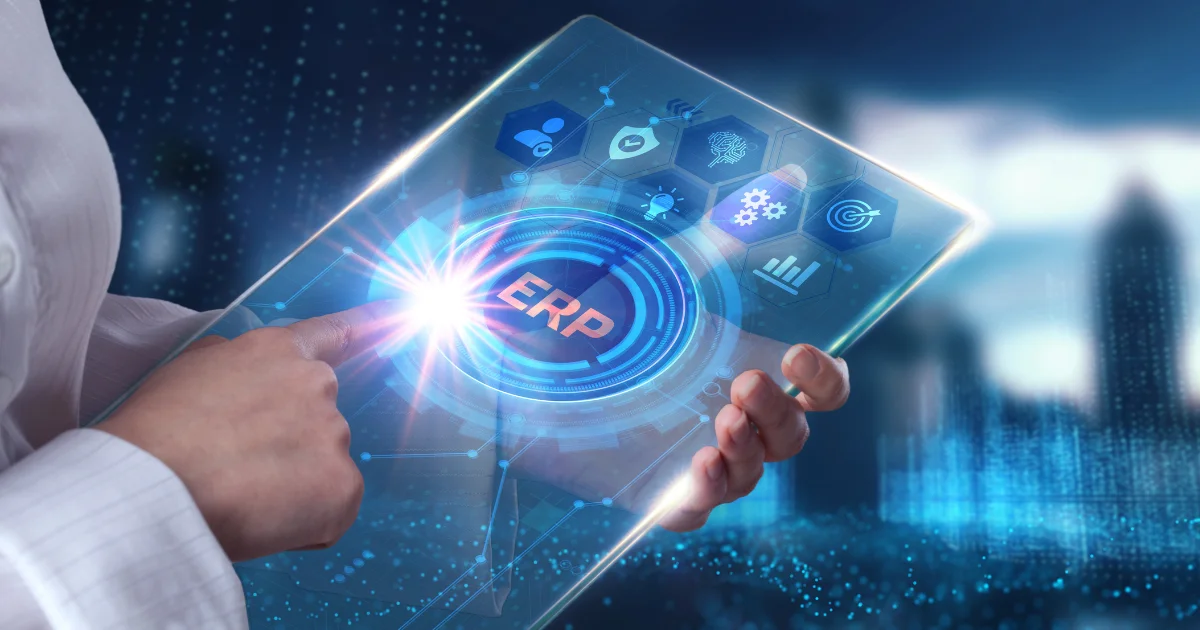In today’s hyperconnected world, Enterprise Resource Planning (ERP) systems have become practically synonymous with efficient business management. These systems serve as key lifelines for businesses by bringing together various departments, automating tasks, and providing an overview of operations in real-time. The streamlined data flow that ERP systems facilitate can significantly enhance efficiency, decision-making, and profitability. But this interconnectedness, as advantageous as it may be, has its drawbacks.
Ransomware—a type of malicious software that holds data hostage until a ransom is paid—has rapidly emerged as a dominant threat in the cyber realm. Because ERP systems are, by nature, homes for a company’s critical and often sensitive data, they’re especially appealing targets for cybercriminals. For any business, the consequence of an attack can be devastating, leading to financial loss, operational disruptions, reputational damage, and even regulatory penalties.
See Also: How to Choose the Best DCIM Software
With the digital frontier continually evolving, it’s no longer sufficient for businesses to adopt a passive stance towards cybersecurity. It’s imperative for them to develop instead proactive measures tailored to safeguard ERP systems. The subsequent sections delve into a suite of strategies that business owners can implement to bolster their defenses and shield invaluable ERP systems from the menacing grasp of ransomware.
Ways to Protect Your ERP System Against Ransomware Attacks:
1. Backup Data Frequently
Though deceptively simple, regular data backups have long been one of cybersecurity’s central pillars, and for good reason. When an ERP system gets targeted by ransomware, having a recent and comprehensive backup can be the difference between a smooth recovery and catastrophic data loss. Thus, it’s non-negotiable for businesses relying on ERP systems to maintain current and secure data backups.
However, simply backing up data isn’t the endpoint. Businesses must also consider the location and method of these backups carefully. It’s usually best to store multiple copies of backups across different media, with at least one stored offline or in an air-gapped environment. This segregation ensures that, if a network becomes compromised, the isolated backups remain untouched and ready for use.
Also Read: What Is Network-Attached Storage (NAS)?
2. Update and Patch ERPs Regularly
Cyber attackers are persistent in their push to seek out and to exploit vulnerabilities in software and systems. This is why businesses must take a proactive approach to system maintenance. Keeping ERP systems, and any associated components, updated helps companies promptly address any known vulnerabilities and thereby deny attackers easy access points.
But beyond the core ERP software, it’s essential not to neglect third-party plugins or integrations. These can sometimes serve as the weak link in the chain, as they can be overlooked during update cycles or might have less rigorous security measures in place. Regularly scheduled audits can identify components that need updating and ensure that the entire ERP ecosystem remains secure.
Another pivotal aspect to consider is the patching process. While updates provide newer features and functionalities, patches are designed to fix vulnerabilities or bugs in the software. Often, cybercriminals exploit these vulnerabilities between the time they are discovered and when they are patched. Adopting a swift patch management process minimizes this window of opportunity and makes it significantly more challenging for ransomware to penetrate the ERP system.
Related: Best Malwarebytes Alternatives
3. Implement Strict Access Controls
ERP systems are repositories of vast amounts of sensitive and valuable data, spanning various business departments. Businesses that fail to control who has access to such data leave themselves open to infiltration attempts by bad actors. By implementing strict access controls, organizations can limit the number of people handling specific data or functionalities to only those who strictly need them.
Role-based access controls (RBAC) are a potent tool in this area. Under RBAC, individuals are assigned roles, and each role has specific permissions attached to it. This system grants employees access only to the areas of the ERP that are relevant to their job functions. For instance, a financial analyst might have access to accounting data but not to human resources records.
4. Train Employees in Cybersecurity Best Practices
The digital walls and barriers to protect ERP systems can be rendered ineffective if the people using the systems aren’t educated about cybersecurity risks. Employees interact with the system daily, which makes them both a potential point of vulnerability and a potent line of defense.
Consistent and comprehensive training programs can arm employees with the knowledge they need to avoid common cyber threats. This includes understanding the dangers of phishing emails, recognizing suspicious activity within the system, and adopting secure practices when interacting with the ERP system.
Moreover, it’s in companies’ best interest to provide refresher courses and periodic updates. The threat landscape is ever-evolving, and yesterday’s knowledge might not shield against today’s threats. By keeping employees informed about the latest threats and best practices, businesses transform their workforce from potential vulnerabilities into vigilant guardians of the ERP system.
Also Read: Best Firewalls for Small Businesses
5. Develop an Incident Response Plan
Even with the most robust cybersecurity measures in place, a breach is always possible. Recognizing this, businesses must have an incident response plan that details actions to take in the event of a ransomware attack or other cybersecurity incidents.
An effective response plan begins with a clear delineation of roles. Who is in charge of communicating with stakeholders? Who liaises with law enforcement? Who manages the technical aspects of containment and recovery? By establishing these roles in advance, businesses can act swiftly when an incident occurs.
Additionally, an incident response plan should cover communication protocols, both internal and external. Transparent communication can mitigate panic, which keeps stakeholders informed and aids in reputation management. Lastly, the plan should lay out steps for recovering operations, from restoring backups to assessing how the breach occurred and preventing future incidents.
Must Read: FreeNAS Alternatives
Conclusion
Protecting ERP systems from ransomware attacks requires vigilance, proactive measures, and continuous adaptation to the ever-changing threat landscape. By implementing the strategies discussed, businesses can fortify their defenses and ensure that their critical operations and data remain secure. In an age where data is a cornerstone of success, such protective measures are not just advisable—they’re essential.






